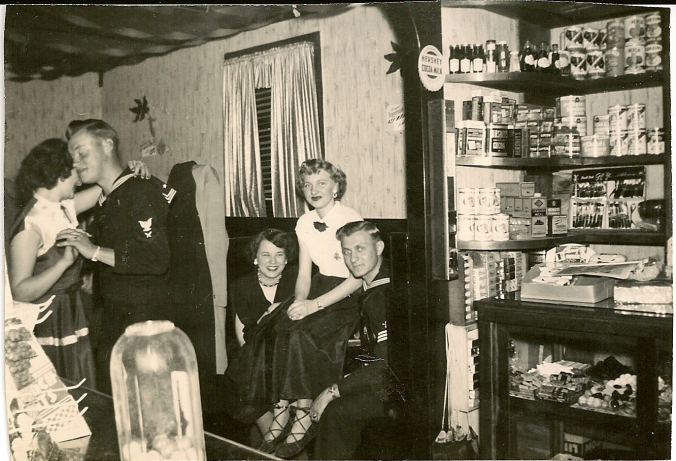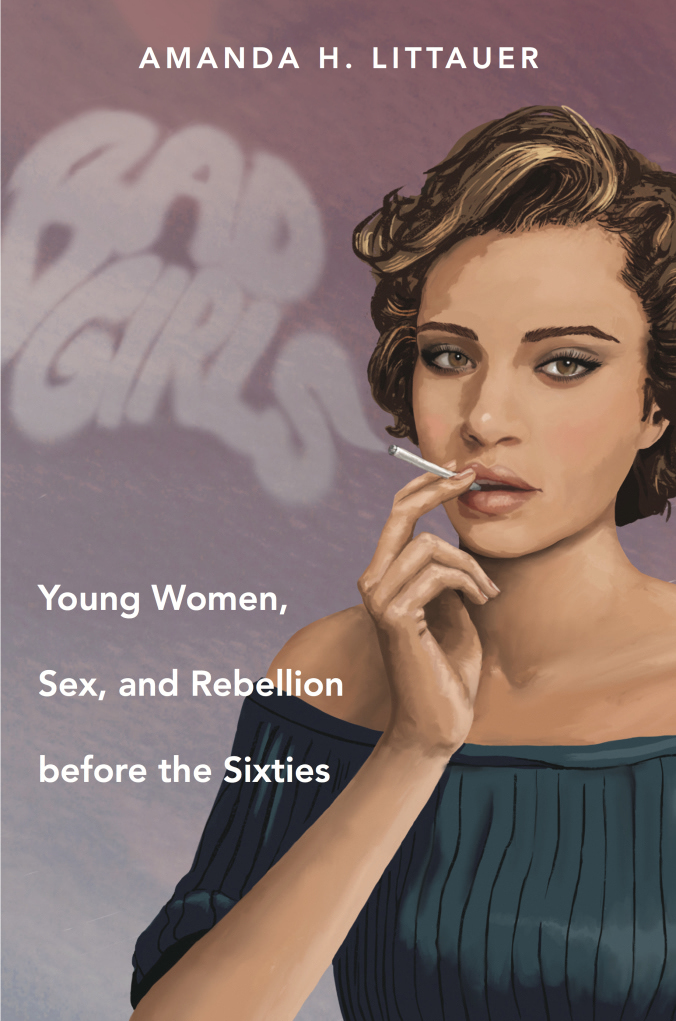In 1949, a year after the publication of Dr. Alfred Kinsey’s notorious Sexual Behavior in the Human Male, a young African American woman from the Bronx sent Kinsey a private letter lamenting the “queer control” she seemed to have over other women. These women, she explained, would literally leave their husbands and risk their safety to be with her. Lucinda Harrison,* a 28-year old African-American woman began her letter, “Dear Doctor Kinsey.”
I’ve been trying to get nerve enough to write you for some time. I’m reading your report on sex, [not] having as yet come across anything concerning my life. I am a woman of 28. As for as I know I must have control over every woman I meet, I am very sociable, easy to talk to, because I smile all the time. Wherever I go they will approach me asking when can I see you, let’s have dinner together, or buying expensive gifts for me. I hate to go to parties, for they love me so much. The women leave their husbands to come to me. They sit and stare at me, they ask embarrassing questions, such as are you Cold, or are you sexy, what control do you have over women…. I’ve broken so many hearts and didn’t know it, I’m not aware of this queer control. One woman jumps out of her window, after calling me up one morning. Once I went in the ladies room in Penn Station in N.Y. A lady asked me to pin her dress up, in so doing I put my arm around her waist, she turn around and said she felt so funny. Dr. I never approach them, is it something I could do, I want to be happy. I want to live a normal life. I just rec. a letter from a nurse, wants me to go away with her. Please Dr. Answer this letter, what can I do to be normal, is an operation for me. I often think of killing myself. I’m so miserable. Please help me, I have never told any one about my life before. I’m a negro [sic] girl, please help me. Thanking you very much.
Harrison was part of a small group of Americans who wrote letters to Kinsey seeking sexual advice about what constituted normative and non-normative sexual behaviors. Such letters to Dr. Kinsey reveal a central tension of postwar American sexual culture: Many Americans were obsessed with sexual adjustment and normality but their stories reveal sexual variance and a world of queer acts and possibilities. These tensions between overt norms and covert and queer possibilities, as historian Beth Bailey has argued, would underpin the sexual revolution. Letters to Dr. Kinsey offer insight into these tensions and into the intimate, emotional and fraught ways average Americans negotiated them.
Writing to Kinsey before the publication of Sexual Behavior in the Human Female (1953), Harrison’s letter testifies to the burgeoning popular conversation about sexual nonconformity in the 1950s. She describes intense same-sex eroticism among women across status differences. The reference to married women—“ The women leave their husbands to come to me”—conjures the presence of lesbian desire among housewives, explored in Lauren Gutterman’s work, and the reference to the bathroom of Penn Station implies that perhaps women, like men, experienced public restrooms as places of sexual or erotic encounter. Engaged in queer public life, interpersonal encounters, and popular discourses about homosexuality, Harrison nonetheless suffered from feelings of isolation, confusion, and despair. She closes her letter by asking Kinsey what she can do to be “normal.” Harrison’s plight dramatizes how everyday people lived and made meaning of sexually variant lives in the years immediately prior to the sexual revolution.

Women were not only the authors of correspondence to Kinsey about sexual norms and variance, but also the topics of letters from men. A year after Harrison sought Kinsey’s advice, a white young woman’s “abnormal” sexual interest occupied the mind of her anxious boyfriend, who appealed to Kinsey for help. In 1950, a male veteran wrote Kinsey about his live-in girlfriend. Before the war, J.V. Ensell* explained to Kinsey in his 1950 letter, his girlfriend seemed “perfectly normal.”
But since we have been back together, she seems “abnormal.” … Back in the summer I heard she was abnormal.… Yet I couldn’t deny it because she had tried to be abnormal with me. Are women who are that way satisfied with one man, or do they like a lot of men?… I want to help her if I possibly can…. There is a cure, isn’t there? She is a very attractive girl with everything to offer a man besides “that.”… She has two girl friends she runs around with. Women that are funny with men, are they with women also? They say birds of a feather flock together. I wonder if her girl friends are like that? She left home with one of her girl friends a while ago.… I want to stop her from running with these two girl friends, thinking it may help her case. I thought of telling her mother and girl friends of her condition to see if we could help her. Dr. K, what is your advice? I’ll wait to hear from you before taking any action. Thank you in advance.
Kinsey concluded that Ensell’s unspecified concern was “mouth-genital contact,” though he never specified whose mouth was on whose genitals. Assuming Kinsey’s reading was correct, then Ensell interpreted his girlfriend’s apparent desire for oral sex as making her decisively different than other women. Ensell’s references to his girlfriend’s “condition” and a “cure” draw upon a vocabulary of pathology that was widespread in the postwar period and often placed one expression of sexual variance within a spectrum of aberrations. Ensell wondered whether his girlfriend’s desire for oral sex with men signified her desire for sexually intimate friendships with women and her desire for multiple male partners. Sexual abnormality, in other words, existed within a constellation of possible variances and one “abnormal act” dovetailed with another.
Kinsey’s response to Ensell sought to trouble his moral framework that saw all variance as pathological. Instead, Kinsey portrayed sexual variance as healthy and normal, urging Ensell to discard the conventional moral framework in favor of a value-neutral biological paradigm: “Disturbances in human history over this matter is entirely a product of moral inhibition. You must go to other sources for judgment in this matter by moral standards…. There is no doubt that this is part of the biologically normal picture.” If a woman’s active desire for oral sex and sexual autonomy was “part of the biologically normal picture” rather than a fixed marker of sexual deviance, how would Americans like Ensell have to reorient their own sexual and gender values?
As these two letters to Kinsey suggest, Americans may well have experienced postwar sexual culture as repressive and suffocating, but so could it be surprising, erotic, confounding, and open to interpretation. Average people of diverse backgrounds were eager—even desperate—to understand the social significance of their variant desires, so correspondents asked for insight from the most famous sex expert of the day. By invoking the language of science rather than morality, Kinsey redrew the lines between normality and abnormality, inviting individuals to reconsider their own place in the American sexual landscape. Letter writers like Harrison and Ensell thus embodied the central tension in postwar sexual culture; their stated aim was to achieve sexual adjustment and normality, but their stories reveal a world of queer acts and desires that would become more familiar as the sexual revolution appeared on the cultural horizon.
* All names of correspondents have been changed in accordance with the requirements of the Kinsey Institute.
 Amanda Littauer is an assistant professor in the Department of History and the Center for the Study of Women, Gender, and Sexuality at Northern Illinois University. Her research focuses on 20th-century sexual culture, the history of women and girls in the modern U.S., and LGBT history. Publications include Bad Girls: Young Women, Sex, and Rebellion before the Sixties (UNC Press, 2015), “Scouts, Tomboys, and the History of Girls and Girlhood,” “‘Someone to Love’: Teen Girls’ Same-Sex Desire in the 1950s United States,” and “The B-Girl Evil: Bureaucracy, Sexuality, and the Menace of Barroom Vice in Postwar California.” Amanda is the current co-chair of the Committee on LGBT History. She tweets from @amandalittauer.
Amanda Littauer is an assistant professor in the Department of History and the Center for the Study of Women, Gender, and Sexuality at Northern Illinois University. Her research focuses on 20th-century sexual culture, the history of women and girls in the modern U.S., and LGBT history. Publications include Bad Girls: Young Women, Sex, and Rebellion before the Sixties (UNC Press, 2015), “Scouts, Tomboys, and the History of Girls and Girlhood,” “‘Someone to Love’: Teen Girls’ Same-Sex Desire in the 1950s United States,” and “The B-Girl Evil: Bureaucracy, Sexuality, and the Menace of Barroom Vice in Postwar California.” Amanda is the current co-chair of the Committee on LGBT History. She tweets from @amandalittauer.

NOTCHES: (re)marks on the history of sexuality is licensed under a Creative Commons Attribution-NonCommercial-NoDerivatives 4.0 International License.
Based on a work at www.notchesblog.com.
For permission to publish any NOTCHES post in whole or in part please contact the editors at NotchesBlog@gmail.com





